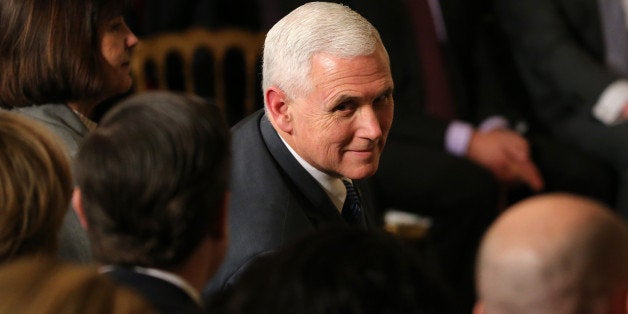
This blog was coauthored by Alex Sheldon at the Movement Advancement Project
If the first two weeks of the Trump administration are any indication, the lesbian, gay, bisexual, and transgender (LGBT) movement is in for a long four years. Amid a flood of executive orders targeting Muslims, immigrants and women, word surfaced that Trump was likely to rescind the Obama administration order protecting LGBT people from discrimination by federal contractors. Then came a White House statement saying that the order would stand.
But days later, a draft of an unprecedented religious exemptions executive order was leaked--an order that would have, among other things, created a far-reaching license to discriminate for federal contractors, non-profits and anyone who receives federal dollars. Then two days later, amid intense public backlash, the Trump Administration stated that the EO had been shelved, at least for the moment.
This chaotic and unnerving dynamic has been playing out in the states as well. Despite many successes at the federal, state, and local levels over the past two years, legal protections for LGBT people are increasingly under attack. And of the more than 200 anti-LGBT bills introduced across 20 states since 2015, a huge number of them have targeted and sought to harm transgender people specifically, via bathroom bans, repealing of nondiscrimination laws, denial of health care, and more.
To help make sense of the current policy landscape in the states for transgender people, the Movement Advancement Project, in partnership with the National Center for Transgender Equality, today released Mapping Transgender Equality in the United States, a report that looks at legal equality for transgender people across the country. The report looks at 25 state laws and policies affecting transgender people, broken into five categories of law: nondiscrimination laws, LGBT youth, health and safety, identity documents, and parenting. The report then outlines how each state is doing by tallying the number of positive laws and subtracting points for harmful laws.
The result? A shocking 23 states have a negative tally for transgender equality, covering 35% of LGBT people. This means that in 23 states, transgender people are not protected from bullying and discrimination in schools, cannot access medically necessary health care, often cannot update the name and gender marker on their identification, and, can be unfairly fired, evicted, or kicked out of public places. The three lowest equality states in the country are Georgia, Tennessee and Nebraska.
At the core of this report is the critical role of state level laws in the fight for transgender rights and the patchwork of protections state-level progress has created. Just since January, legislators in 15 states have introduced nearly 40 anti-transgender bills that intend to restrict access to bathrooms, health care, and/or the ability to update identity documents.
Of the 15 states that have already introduced anti-transgender bills, 12 already have low or negative scores for transgender equality. That means that the majority of states that are targeting transgender people with harmful bills already have more laws that actively harm transgender people than laws that directly help or protect them--legislators in these states are working to make already-hostile states more dangerous.
By contrast, California and the District of Columbia have the highest equality, followed by Vermont. However, even the highest equality states have work to do. There is no state that has a high level of equality across all five of the major policy areas affecting transgender people.
Compounding the challenges faced by transgender people, while laws and policies can be broken out neatly on paper, real life is messier. That is, the laws are interconnected in important ways that mean a poor law in one area can also impact transgender people in other areas of life. Consider a state that requires transgender people to have proof of sex reassignment surgery in order to change the gender marker on identity documents, and at the same time has laws and policies that exclude transgender people from receiving transition-related healthcare.
Similarly, the absence of a law in one area could impact a person's ability to access protections made available in another area. For example, when a transgender youth lacks protections from bullying and harassment in schools, they are significantly less likely to graduate and pursue higher education, which limits future employment opportunities even in states with employment nondiscrimination protections.
To achieve full legal equality for transgender people, change must happen at many levels. The resounding rejection of North Carolina's HB2 in the court of public opinion should serve as a warning for other states like Texas that are considering similar legislation in the coming months. A Supreme Court ruling in the Gavin Grimm case could extend much-needed protections to transgender students across the country. And as more Americans come to know and understand transgender Americans, state laws should and will change to provide critical legal equality across all aspects of daily life--from employment to housing to healthcare to family.
See the most up-to-date state laws and policies on our Equality Maps, and stay informed as MAP continues to blog about current events and their impact on state laws and policies across the country.
